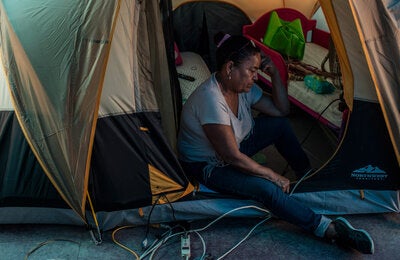By Thomas Abraham
This article surveys the current guidelines and makes recommendations for additional tools and guidelines to be developed in four areas: integrating long-term behavior change models with outbreak communications; research to develop a better understanding of communicating through the internet; research to understand how to use communications to build trust; and developing guidelines and principles to understand the political nature of disease outbreaks...
By Thomas Abraham, Public Health Communication Programme, Journalism and Media Studies Centre, The University of Hong Kong, Pokfulam, Hong Kong.
Full published article available at: http://www.eht-journal.net/index.php/ehtj/article/view/7160/12622
The influenza pandemic of 2009 revealed shortcomings in the existing guidelines for risk and outbreak communication. Concepts such as building trust proved hard to achieve in practice, whereas other issues such as communicating through the internet and coping with the political fallout of disease outbreaks are not dealt with in existing guidelines. This article surveys the current guidelines and makes recommendations for additional tools and guidelines to be developed in four areas: integrating long-term behavior change models with outbreak communications; research to develop a better understanding of communicating through the internet; research to understand how to use communications to build trust; and developing guidelines and principles to understand the political nature of disease outbreaks.
On April 24 2009, the World Health Organization (WHO) announced that a previously undetected swine origin influenza virus was causing outbreaks of disease among humans in Mexico and the United States. By the end of August 2010, when the WHO declared the pandemic over, the new virus had spread to more than 214 countries and territories and caused at least 18,449 laboratory confirmed deaths (1). Given that many countries did not have the capacity for laboratory confirmation of deaths or even cases, the number of deaths worldwide is estimated to be significantly higher. In the United States alone, one study has estimated over 12,400 deaths from the new virus (2).
The pandemic was a testing time for the field of risk and emergency communication. Although communications tools and guidelines to deal with disease outbreaks exist, the scope of the pandemic threw up challenges that demonstrated both the usefulness of existing tools and concepts as well as an understanding of their limitations. If one of the aims of communication is to build common understanding between health agencies and the public, then low-vaccine uptake, allegations of collusion between health agencies and the pharmaceutical industry, and allegations that the pandemic was a 'fake pandemic' reflected failures in communication. As one commentator noted, existing communications guidelines and practices might require 'some pivotal adjustments' after being tested during the pandemic (3).
This article reviews existing tools, principles, and guidelines for communication during pandemics and other disease outbreaks and looks at the gaps in theory and practice that the pandemic has revealed. In particular, it examines four questions:
1) Do existing health risk communication tools, which were designed to meet the needs of disease outbreaks of relatively short duration, work for an event as long and complex as a pandemic?
2) What do health communicators need to understand about communicating through a medium as interactive and dynamic as the internet?
3) Trust is key principle in risk communications, but we live in what has been characterized as a post-trust society (4). How are public health agencies and governments to build trust in this context?
4) Pandemics and other serious disease events are political, social, and economic events, in addition to being public health events (5). What are the key issues that communicators need to understand about the sociopolitical environment in which communication occurs? In particular, what can we learn from sociological and cultural scholarship into risk perception?



